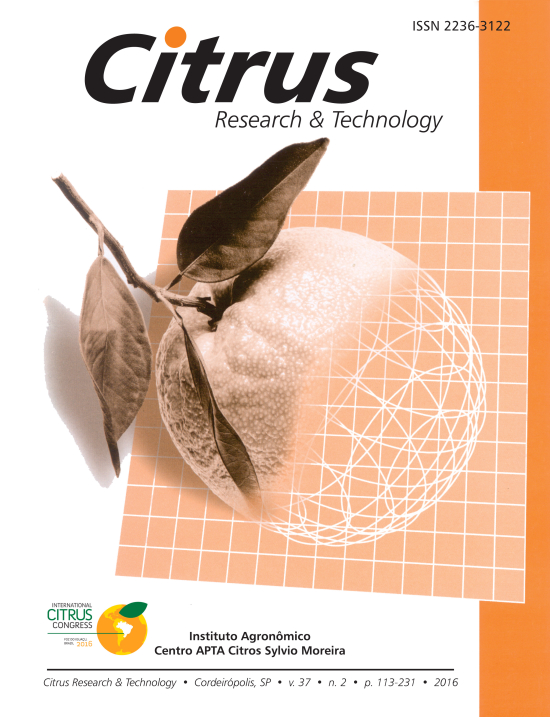Desenvolvimento vegetativo e características físico-químicas dos frutos de quatorze genótipos de limão
Vegetative development and physicochemical characteristics of the fruits of fourteen lemon genotypes
Rodrigo do Vale Ferreira, Marinês Bastianel, Fernando Alves de Azevedo & José Dagoberto De Negri
Abstract
O limão, também conhecido como limão verdadeiro [Citrus limon (L.) Burm. f.] ainda tem sua origem controvertida, mas a hipótese mais considerada é que seja um híbrido originário da Índia. Essa fruta tem grande importância no mundo, sendo que as principais regiões de cultivo são os Estados Unidos da América (EUA), Argentina e região mediterrânea. No Brasil sua importância ainda é restrita à fabricação de refrigerantes e em menor quantidade ao mercado in natura. As principais cultivares no país são os limões Siciliano e Eureka. O objetivo desse trabalho foi avaliar o desenvolvimento da copa e a qualidade físico-química dos frutos de quatorze genótipos de limão do Banco Ativo de Germoplasma de Citros (BAG Citros), do Centro de Citricultura Sylvio Moreira/IAC, localizado em Cordeirópolis, SP. Os genótipos foram mensurados quanto a altura e o diâmetro para a obtenção do volume de copa e determinação do seu desenvolvimento. Os frutos foram submetidos à análise de determinação de seus parâmetros físicos e químicos e a consequente distinção entre eles. Os resultados mostraram grande variação nos materiais estudados quanto ao desenvolvimento da copa, sendo que os cultivares Allen Eureka e Genova apresentaram menor porte, com potencial para plantios adensados. Quanto à qualidade de fruto os genótipos Meyer e Genova se destacaram com maiores teores de sólidos solúveis, vitamina C e rendimento em suco.
Keywords
Abstract
The lemon, also known as true lemon, [Citrus limon (L.) Burm. f.] still has its origin in controversy, but the hypothesis most considered is that it is a hybrid originating in India. This fruit is of great importance in the world, with the main growing regions being the United States of America (USA), Argentina and the Mediterranean region. In Brazil its importance is still restricted to the manufacture of soft drinks and in smaller quantity to the market in natura. The main cultivars in the country are Sicilian and Eureka lemons. The objective of this work was to evaluate the development of the canopy and the physicochemical quality of the fruits of fourteen lemon genotypes of the germplasm collection (BAG Citros), from the Centro de Citricultura Sylvio Moreira/IAC, located in Cordeirópolis, Sao Paulo State, Brazil. The materials were measured for height and diameter to obtain canopy volume and determination of their development. The fruits were submitted to analysis of determination of their physical and chemical parameters and the consequent distinction between them. The results showed a great variation in the studied materials, with the cultivars Allen Eureka and Genova presenting smaller size, with potential for densified plantings. As for fruit quality, the Meyer and Genova genotypes showed higher levels of soluble solids, vitamin C and yield in juice.

